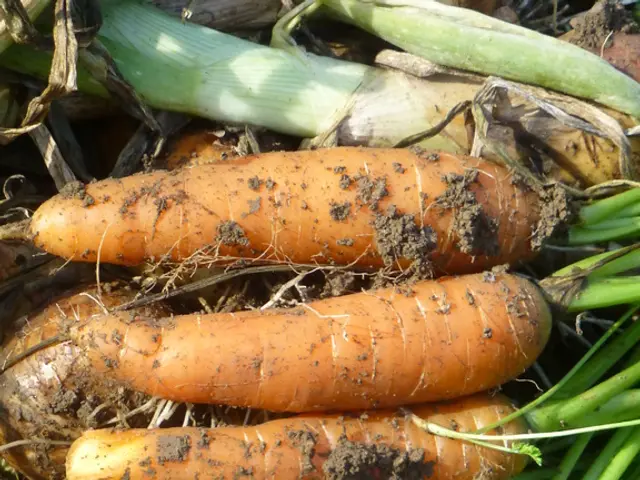Guide for Sowing Chestnut Tree Seeds or Nurturing Seedlings
Planting Chestnuts Made Easy
Looking to grow your own chestnut trees? This guide will walk you through the basics of planting, caring for, and harvesting chestnuts.
Starting from Scratch
Chestnut trees can grow in various climates and be started from either seed or seedlings. To ensure a bountiful harvest, select a blight-resistant, climate-adapted variety.
Choosing the Perfect Spot
- Sunlight: Given their love for sunshine, pick a location with at least six hours of direct sunlight each day, preferably on a slight slope for better drainage.
- Soil: The soil should be well-draining, slightly acidic, and deep. While they can tolerate rocks and gravel, steer clear of heavy clay soils. Aim for a pH between 4.5 and 6.5.
Planting Seeds
- Stash seeds in a bag with moist moss, peat moss, or sawdust, and refrigerate them for several months.
- Sow seeds directly outdoors in early spring after the soil is warm.
Alternatively, start them indoors from February, when they begin to develop roots, using a cardboard carton filled with soil-free potting mix. Once the seedlings grow sturdy, transplant them outdoors in the spring.
Planting Seedlings
- Dig a deep planting hole twice the size of the root ball.
- Place the seedling in the hole, ensuring the roots can fit without bending, and backfill with garden soil.
- Protect seedlings from rodents with hardware cloth that extends 2 to 4 inches above the ground.
Tending to Your Tree
- Watering: During the first two months, provide the tree with 1 gallon of water per week. Mature trees require 1 inch of water per week during the growing season.
- Weed Control: Keep weeds at least 2 feet away from new seedlings and the ground bare under established trees to promote growth.
- Fertilizing: Fertilize the tree with a balanced fertilizer during its second year.
- Training: Train the branches during the first few years to follow a central leader form for a healthy, strong tree.
- Blight Prevention: Be vigilant against chestnut blight, controlling pests and choosing varieties resistant to the disease.
Harvesting the Fruits of Your Labor
Chestnut trees bear no fruit for several years, but once they do, you'll be rewarded with a delicious, nutritious treat!
- Chestnuts ripen in early October and drop off trees as the weather cools, ready for harvest.
- Collect them from the ground or cut off the unopened burs during early to mid October and store them in a cool, dry place. Once they open, collect the nuts.
- To maintain a healthy lifestyle, consider incorporating home-grown chestnuts into your cooking, as they offer a nutritious addition to a variety of dishes.
- In your home-and-garden endeavors, don't forget the therapeutic aspect of gardening, such as the tranquility a chestnut tree can bring to your home landscape.
- A balanced lifestyle also includes proper self-care and rest, knowing that after tending to your chestnut tree, you'll reap the rewards of its bounty in your own home.








